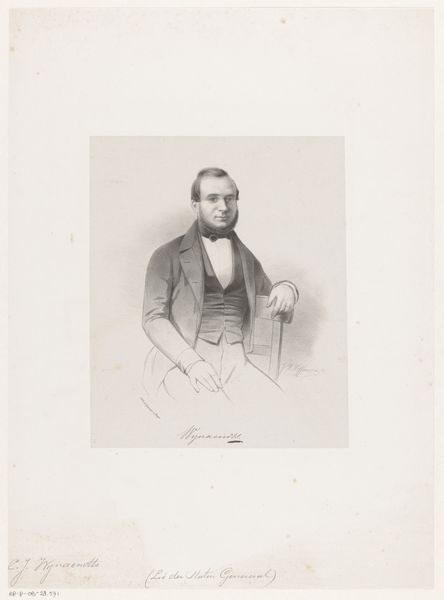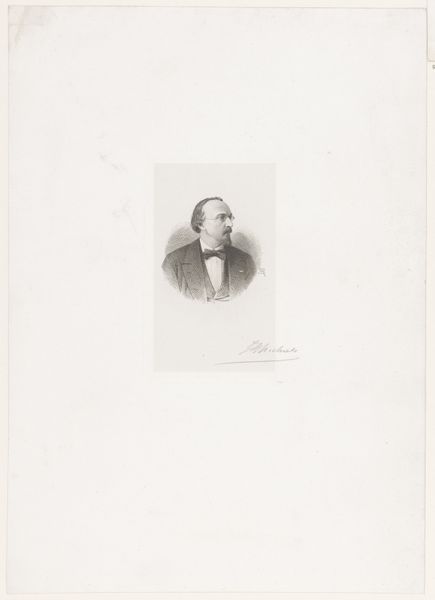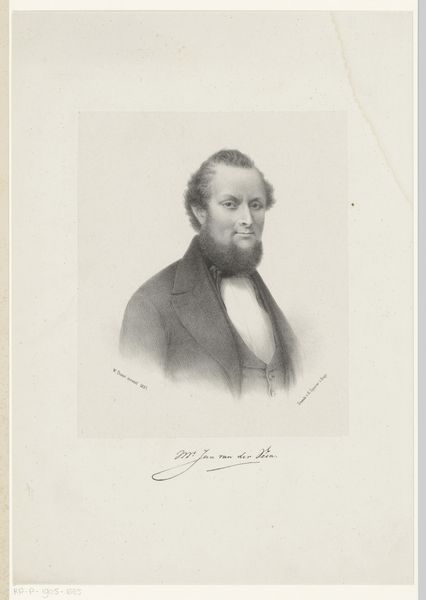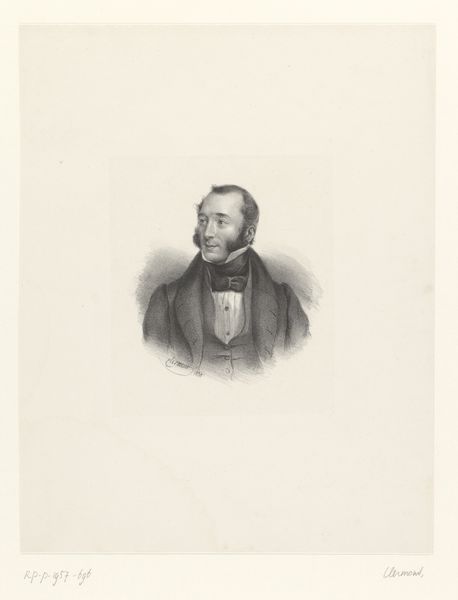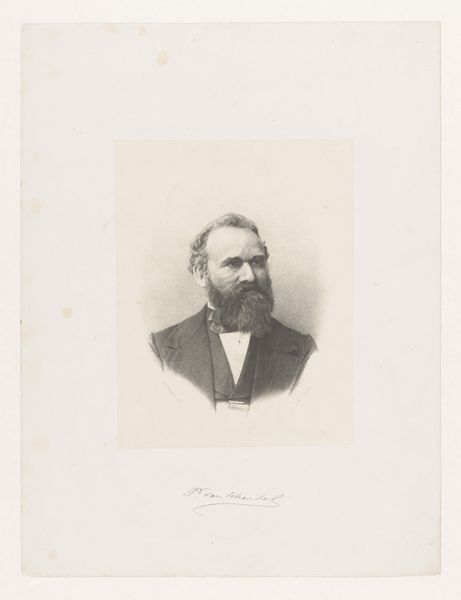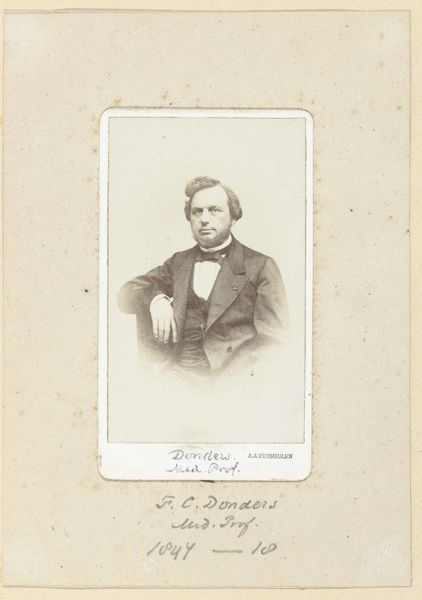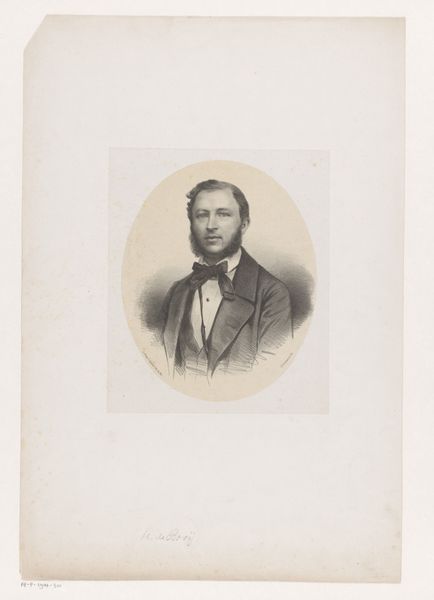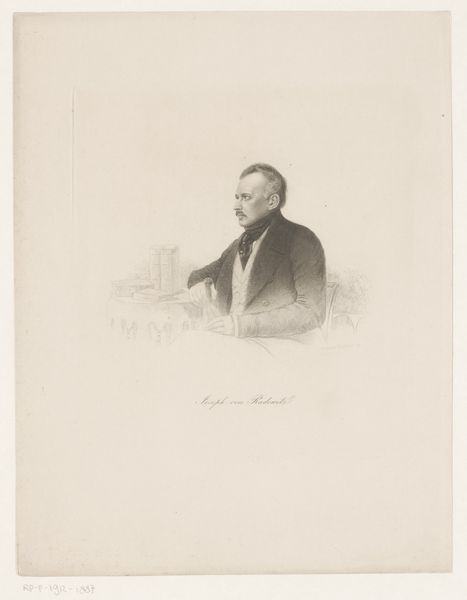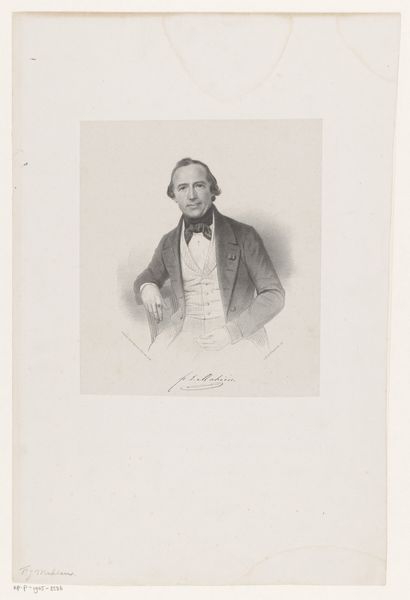
drawing, print, pencil, graphite
#
portrait
#
pencil drawn
#
drawing
# print
#
pencil sketch
#
pencil drawing
#
pencil
#
graphite
#
academic-art
Dimensions: height 175 mm, width 115 mm, height 255 mm, width 340 mm
Copyright: Rijks Museum: Open Domain
Curator: Welcome. Here we have "Portret van Joannes Matthias Schrant" a drawing by Carel Christiaan Antony Last, likely created before 1896. It’s currently held in the Rijksmuseum. Editor: My first impression is one of…respectability. It's a very formal portrait, quite serious, even. The tightly buttoned coat and bow tie suggest a man of status. Curator: Indeed. Let's consider the medium itself. Graphite, pencil on paper. The artist uses delicate strokes to capture the likeness of Schrant. Note the subtle gradations of light and shadow that define the contours of his face. There is real refinement here. Editor: It strikes me how this image might reflect 19th-century notions of masculinity and power. Consider the implications of portraying Schrant as stern, upright and authoritative; perhaps signaling an investment in class or a claim to higher social position during a period of social restructuring. What avenues did he have access to by expressing himself in this manner? Curator: The composition certainly reinforces that interpretation. The controlled line work speaks to academic training. We observe carefully rendered details— the texture of the hair, the folds of the fabric. Each element contributing to the overall effect of composed dignity. Editor: Do you feel that composed dignity may be rooted in very particular social constraints of his time? Think of how Schrant may have had to navigate the burgeoning ideas of social and financial status as new civic practices were taking hold. Curator: Without knowing Schrant’s life or social position directly, it remains a skillful rendering, technically proficient in its realism. A representation that successfully immortalizes him within established conventions of portraiture. Editor: To appreciate such conventional approaches is, I suggest, to understand what’s at stake in them; who can participate in these traditions, who gets excluded, and whose stories are prioritized. Art history can be an active process that involves continuously expanding the dialogue. Curator: An expansion well taken! Though, I find much reward from close examination of this piece’s execution. Editor: And I feel fulfilled contemplating the art's relationship to the times from which it comes.
Comments
No comments
Be the first to comment and join the conversation on the ultimate creative platform.




